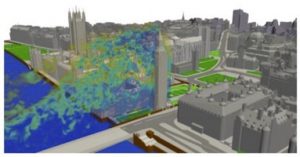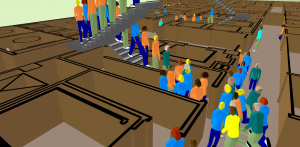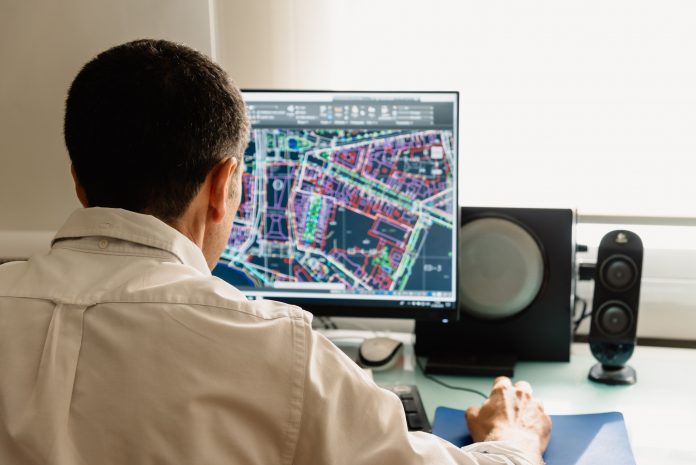BIM is often described as a technology, automation, or a particular piece of software. However, it is actually a process that produces a building information model amongst other things. Dr Kristopher Dane, vice president and director of digital design at Thornton Tomasetti explores this further
While BIM adoption has normalised 3D designing of a building, shifts toward centralising data and advances in technology are unlocking the solutions to complex design problems that present the design community with incredible opportunities.
In simple terms, BIM is a digital representation of a building’s physical and functional properties and includes information about every component that goes into a project. The resulting 3D model helps architects, engineers and construction professionals, create and design more effectively by connecting the 3D model to the 2D drawing.
How it has impacted building design?
Ever since Autodesk introduced the ability for teams to work simultaneously on a single model in 2004, Revit has been a cornerstone of the AEC industry’s adoption of 3D modelling and BIM. With the adoption of cloud-based model hosting in BIM360, project teams across the globe can now work together on a single platform.
While common data environments (CDE) like BIM360 are eliminating information silos and reducing the friction in sharing BIM data, they have also highlighted the importance of communication between design partners outside the model to understand design objectives and status.
Additionally, the parallel creation of 3D models alongside traditional 2D construction drawings has expanded the skillset required of AEC staff to support 3D modelling, interoperability, and model visualisation.
The adoption of BIM software and CDEs has been enabled by advances in modelling software, computing power, and cloud resources. These combined technologies have also enabled advanced analysis that leverage the 3D models including finite element modelling, computational fluid dynamics, energy modelling, daylight studies, and construction sequencing.
Whereas designers may have previously considered only a handful of solutions for a given design, generative design in BIM software allows for hundreds or thousands of options to be generated and analysed so the best option can be selected.

What’s coming next?
If the last 10 years has been about moving to 3D and automating workflows, the next 10 will be about applying that automation to solve novel problems, becoming data-driven, and integrating the supply chain.
AEC firms will need to address changing skillsets, competition for talent, and develop relationships to engage new partners to solve emerging problems. In the coming years, we can expect that the design deliverables will shift away from physical drawings and toward BIM especially as firms adopt ISO 19650.
Digital transformation
The handover of physical drawings to municipal authorities and building owners will be replaced by electronic drawings and BIM via tools such as Pyle (recently acquired by Autodesk).
Accompanying electronic handover, we will see a move to adopt a digital signing of deliverables. Not just scanning a stamp, but using an actual, 3rd party certified digital signature. This shift will place pressure on the licensed professionals and boards to understand how to manage the risk of “stamping” digital deliverables.
Addressing novel challenges
The broadening stakeholder groups and growing analytical toolset position AEC professionals to address a range of emerging challenges from project conception through to facilities management. At Thornton Tomasetti, we have been able to bring our scientific and engineering skills to address challenges with new partners.
We have built upon our expertise in blast hardening to layer on operational security planning and human movement modelling to explore solutions to a range of scenarios. We’ve been adapting our CFD capabilities to understand how products interact with the human body and understand how to mitigate the risk of COVID for return-to-work planning.
As project schedules have been compressed, we have shortened the supply chain by bringing structural design closer to fabrication through advanced project delivery. In each of these cases, we are leveraging advanced analysis and BIM to help clients understand critical design trade-offs.

People – new partners, new training
Novel solutions require engagements with new stakeholders. In some cases, this means that we will have new customers. In other cases, this means that AEC firms will get closer to existing customers up and down the supply chain from data managers to master planners to fabricators to building maintenance staff.
As firms adopt ISO 19650 and increase their own data requirements, AEC firms will have to be agile to meet those requirements. This will require constantly upskilling existing staff and training new recruits to keep up with the rate of change in technology.
New problems – security and data
As buildings become a host for more and more technology that is used to tailor the experience to occupants, new risks will present themselves around data security and privacy. Modern building technology will need to address the security issues that have plagued SCADA (Supervisory control and data acquisition) systems that control key critical infrastructure and AEC firms will have to learn how to manage the data and mitigate the associated risks.
The shift to BIM software has affected building design firms, both in how we run our businesses and how we do our work. While BIM has resulted in workflow efficiencies, we have yet to realise a true BIM deliverable.
Common data environments such as BIM360 have centralised project information and improved design coordination but they have also opened the doors to new project stakeholders and requirements. Responding to these requirements provides an opportunity for designers to leverage their design capabilities and emerging technology to solve novel problems.
By fostering innovation, improving technical capabilities, and reducing barriers to entry, BIM has equipped AEC firms to respond to emerging needs in an increasingly uncertain world.

Dr Kristopher Dane
Vice president and director of digital design














